Why Is Video Editing Better on a Mac
The best MacBook for video editing in 2021
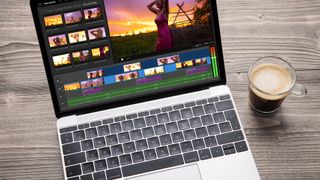
If you're after the best MacBook for video editing, you've come to the right place. With high-powered performance and gorgeous screens, MacBooks are the ideal choices for filmmakers who want a portable powerhouse to edit video on. Unsurprisingly, they're hugely popular with professional and amateur video editors alike.
As are Mac PCs. If you prioritise affordability or raw power, you might also consider a Mac for video editing. Like MacBooks, they run Apple's macOS operating system and offer Apple's renowned build quality. The Mac Pro is the biggest beast of all, but there's also the Mac mini, which is cheaper than any MacBook, but you'll need to invest in a monitor. With so many options, it can be difficult to decide which is the best Mac for video editing for you, but we'll analyse all of the options below.
Make sure you check out our round-up of Apple deals if you want to find a bargain on any of these Macs and MacBooks, and see our round-up of Apple Black Friday deals too. Meanwhile, if you're interested in Windows-powered alternatives, we also have a selection of the best laptops for video editing.
The best MacBooks and Macs for video editing
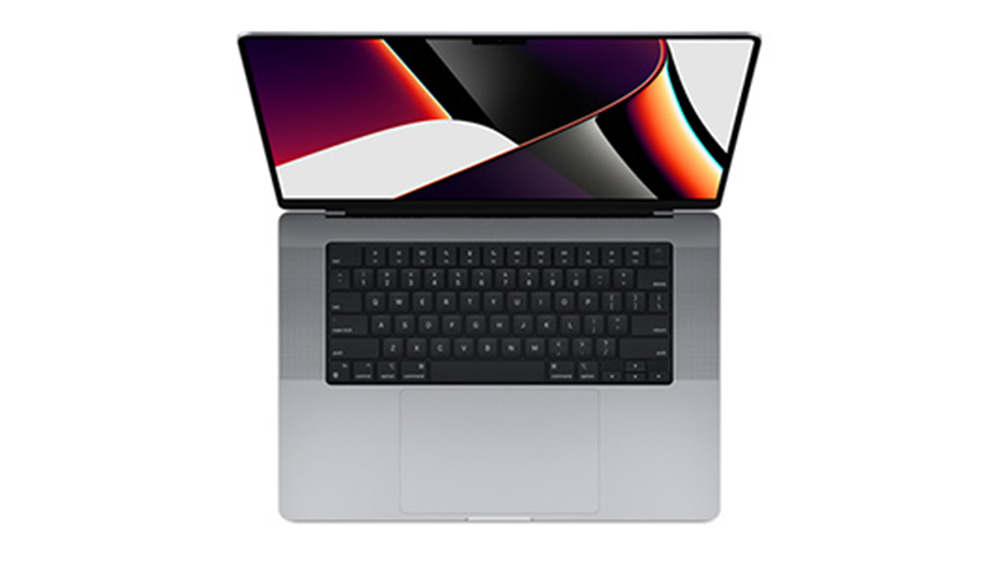
The best MacBook for video editing overall
Specifications
Processor: Apple M1 Pro or M1 Max
Storage: 512GB, 1TB, 2TB, 4TB, 8TB
Memory: 16GB, 32GB, 64GB (unified memory architecture)
Touch ID and Touch Bar?: Touch ID
Reasons to buy
+Fantastic power +Class-leading mini-LED screen +Huge battery life
Reasons to avoid
-Heavier than the older model
With its stunning 16-inch screen and powerful M1 Pro or M1 Max chip, the new MacBook Pro 16-inch (2021) released in October 2021 is the best laptop period, not to mention the best laptop for the heavy processing of video editing. It's at least twice as fast as the 2020 MacBook Pro (twice as fast again if you opt for the M1 Max).
Both chips can support editing multiple streams of 8K video in real-time without rendering. They feature a ProRes accelerator in the media engine (two in the Pro Max's case), which has been designed to speed up pro-video workflows while making video processing more efficient, so editing video shouldn't punish the battery life as heavily.
Editing video can soon see your storage needs fill up, but the MacBook Pro can be configured with up to a whopping 8TB storage, as can the smaller MacBook Pro 14 (see below). The main advantage of this, the larger of the two 2021 MacBook Pros, is the screen size to best see the contents of what you're editing. Video editing software like Final Cut, Premiere or Resolve comes with complex interfaces that need as much room as you can give them, so many video editors will want the larger device if you don't want to hook up an external monitor.
Of course, that might change if you do a lot of video editing on the move. This 2021 16-inch MacBook is 20 per cent heavier than its 14-inch sibling and 100g to 200g heavier than the old Intel MacBook Pro, so if your priority is portailty, the smaller 14-inch device below might be the best MacBook for video editing for you.
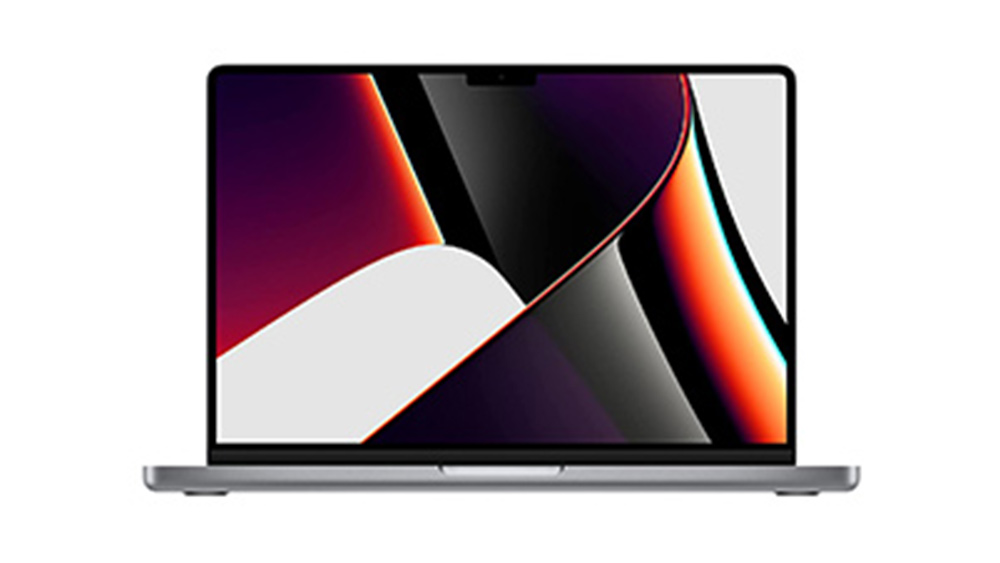
The best MacBook for video editing if you need portability
Specifications
Processor: Apple M1 Pro, M1 Max
Storage: 512GB, 1TB, 2TB, 4TB, 8TB
Memory: 16GB, 32GB, 64GB (unified memory architecture)
Touch ID and Touch Bar?: Touch ID
Reasons to buy
+Great performance +Stunning screen +Excellent battery life +Good selection of ports
Reasons to avoid
-Not the biggest screen
If you do a lot of video editing on the go and need a MacBook you can carry around with you, you might prefer the lighter and more portable 2021 MacBook Pro 14-inch. It offers very similar performance to its 16-inch sibling above but in a more compact package. In fact, all you really lose apart from the additional screen size is a little battery life, although that's still very impressive thanks to the M1 Pro and M1 Max chips' optimised media engines for video editing.
Like the larger device, it's available with either the M1 Pro or M1 Max chip. Its price starts $500/£500 below that of its larger sibling, although the starting model has a slightly less powerful 8-core CPU, 14-core GPU version of the M1 Pro. You can up that to the 16-inch's 10-core CPU, 16-core GPU. If you're torn choosing between the chips, the M1 Pro offers plenty of power to handle video editing, but the Pro Max offers just incredible speeds, outshining even the Mac Pro handling, for example, 13.4x faster 4K render in Final Cut Pro.
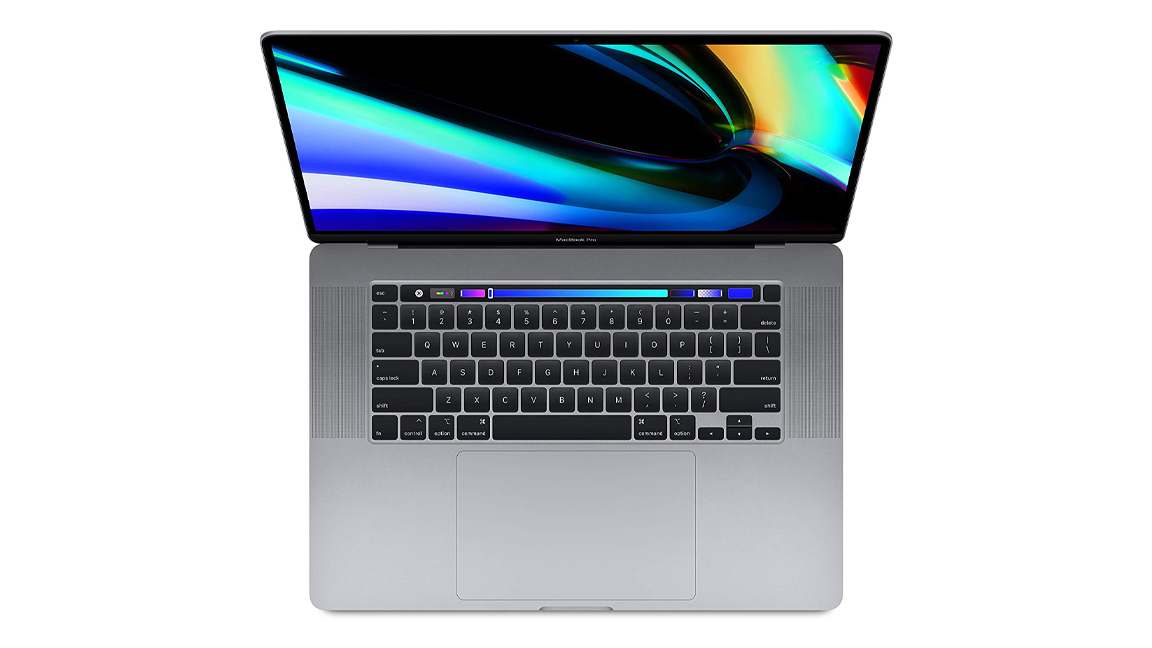
03. MacBook Pro (16-inch, 2019)
The best older MacBook for video editing
Specifications
CPU: 9th-generation Intel Core i7 – i9
Graphics: AMD Radeon Pro 5300M – Radeon Pro 5500M
RAM: 16GB – 64GB
Screen: 16-inch Retina display with True Tone
Storage: 512GB – 8TB SSD
Reasons to buy
+Stunning 16-inch screen +New and improved keyboard
Reasons to avoid
-Limited to four Thunderbolt 3 ports
While the new 2021 16-inch MacBook Pro is our top choice as the best MacBook for video editing, the previous 2019 device shouldn't be dismissed if you find a good deal. It's still very powerful and the gorgeous 16-inch screen makes editing videos a joy. It's slightly lighter than the newer model, and best of all, you're more likely to find discounts on the device due to the release of the newer model.
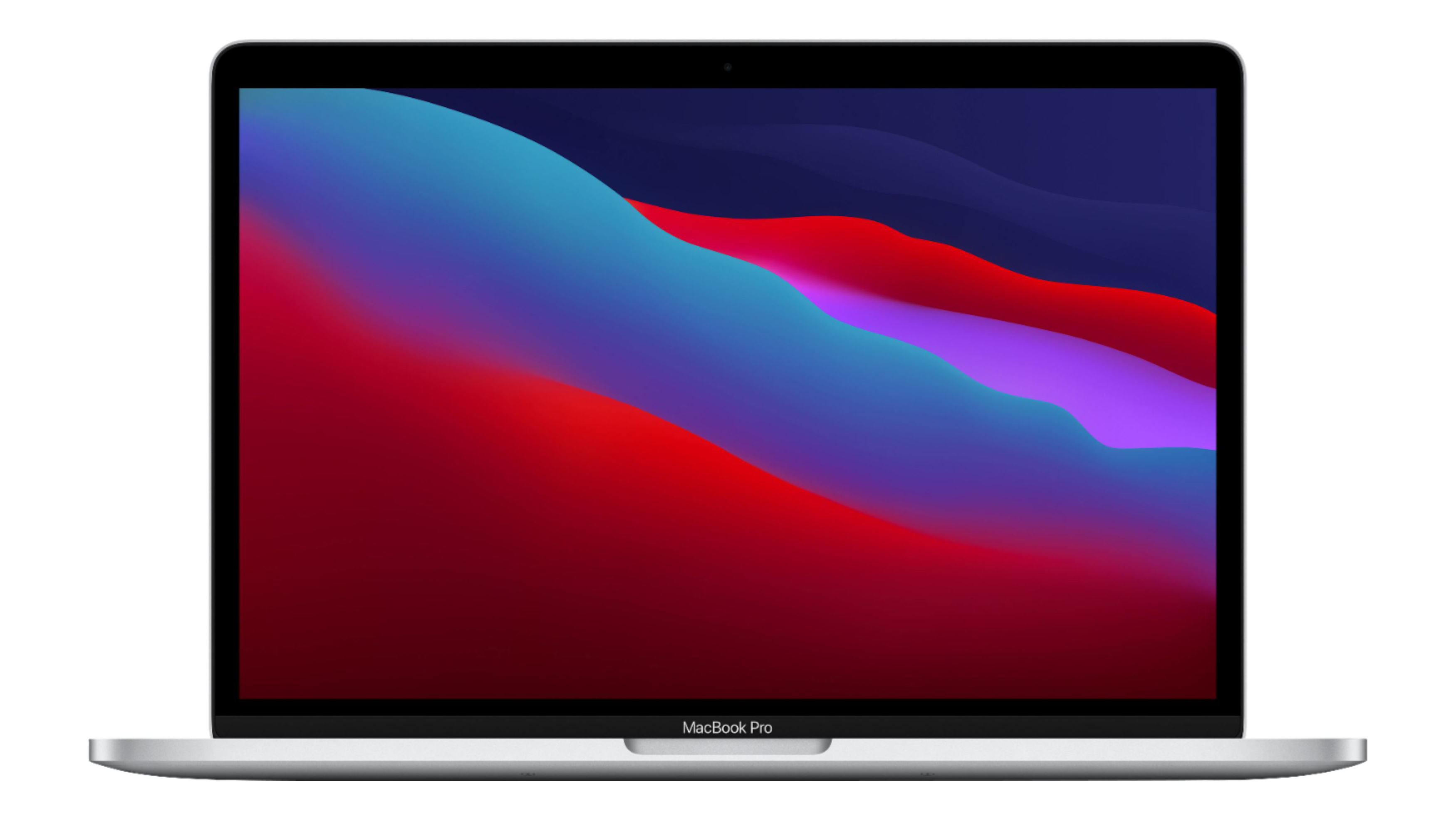
04. MacBook Pro 13-inch (M1, 2020)
An even more portable MacBook for video editing
Specifications
CPU: Apple M1 chip with 8‑core CPU
Graphics: Integrated 8-core GPU
RAM: 8GB – 16GB unified memory
Screen: 13.3-inch 2560 x 1600 LED-backlit Retina display
Storage: 256GB – 2TB SSD
Dimensions (H x W x D): 30.41 x 21.24 x 1.56 cm
Reasons to buy
+Huge battery life +Great performance
Reasons to avoid
-Still lacks ports -Not a huge boost over cheaper MacBook Air
The MacBook Pro 13-inch (M1, 2020) is the best MacBook for video editing if you're looking for something really portable. The smaller 13-inch screen doesn't give you the amount of workspace the 2021 16-inch or even the 2021 14-inch offer, but it's still gorgeous, with support for the P3 colour gamut - essential for most professional filmmakers.
The model looks the same as previous versions on the outside, but Apple made big improvements on the inside, thanks to its M1 chip. It's not as fast as the M1 Pro and M1 Max that you get in the 2021 devices, but it still offers excellent performance when editing 4K and even 8K footage, and battery life is also very good, letting you work on your masterpieces for hours on end without having to plug in.
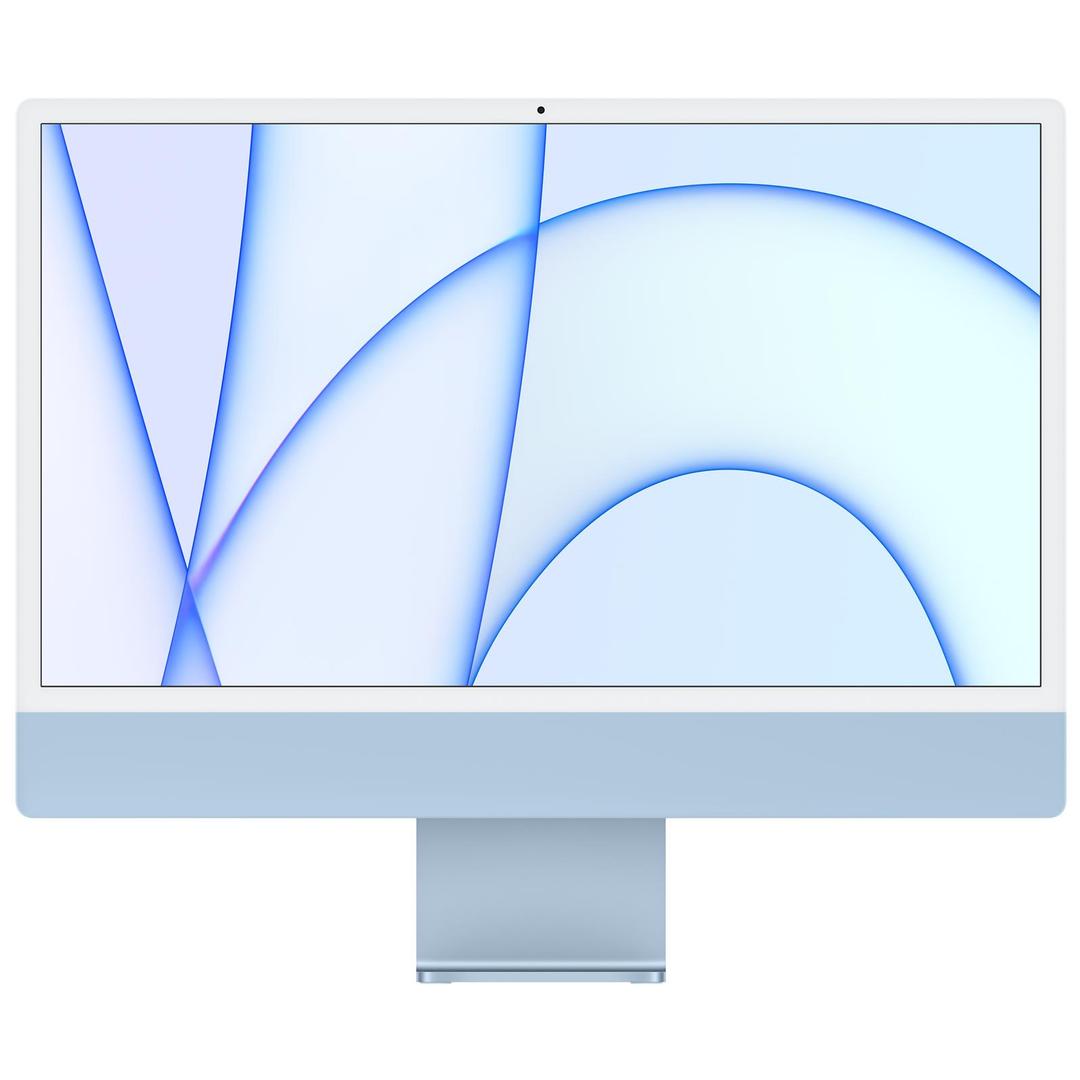
04. iMac (24-inch, 2021)
The best Mac for video editing
Specifications
CPU: Apple M1 chip with 8‑core CPU
Graphics: Integrated 7-core – 8-core GPU
RAM: 8GB – 16GB unified memory
Screen: 24-inch 4.5K Retina display
Storage: up to 2TB
Reasons to buy
+Excellent screen +Great new design
Reasons to avoid
-Lack of ports remains -Mac mini may offer better value for some
Apple's iconic iMac got a huge new redesign in 2021. Not only has it got a bold new look (which comes in various colors), it's thinner, lighter and comes with a larger 24-inch screen compared to the 21.5-inch model it replaces. Best of all, it feature's the Apple M1 chip - the same one that powers the 13-inch MacBook Pro above.
While the MacBook Pro is now more powerful, the benefit here is that you get a larger screen, which many people will find it more comfortable to work on. It's also more affordable, though you do miss out on the sheer portability that the 13-inch MacBook Pro offers.
As far as desktop PCs go, it's an excellent device to edit videos on. It's all-in-one design means the computer is built into the screen, so there's no awkward wires or cables to plug in. Just hook it up to a power source, connect the wireless keyboard and mouse, and away you go.
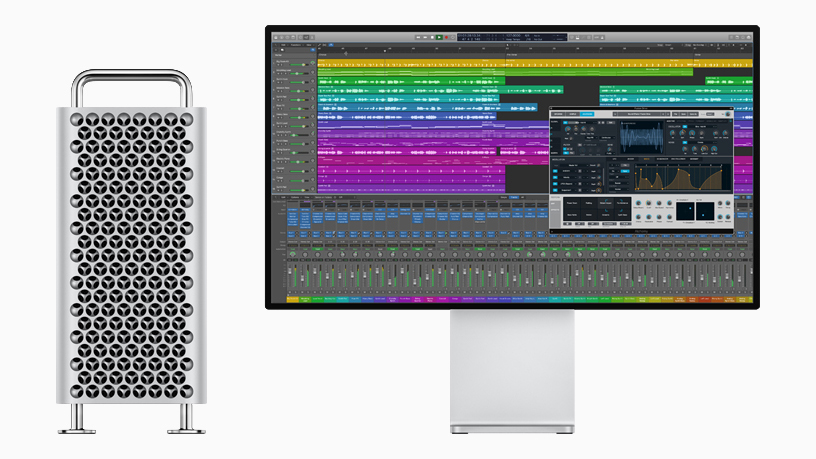
05. Apple Mac Pro (2019)
An incredibly powerful video editing Mac
Specifications
CPU: up to 28-Core Intel Xeon W
Graphics: up to AMD Radeon Pro Vega II Duo
RAM: up to 1.5TB
Storage: up to 8TB SSD
Communications: 802.11ac Wi-Fi, Bluetooth 5.0, 2x 10Gb Ethernet,
Dimensions (W x D x H): 21.8 x 45.0 x 52.9 cm
Reasons to buy
+Incredibly modular +More than enough power
Reasons to avoid
-Very expensive -Not a very attractive design
If you're after an absolute powerhouse of a Mac for video editing, and you've got plenty of budget, then the Apple Mac Pro (2019) is definitely worth investing in. The Mac Pro can be configured to come with hardware that makes intensive video editing tasks complete much faster than less powerful PCs, and this can have a huge impact on your workflow.
While it is very powerful and very expensive, there are plenty of configuration options, which lets you pick the specs that best suit your needs and budget. It's also got a modular design, which means unlike Apple's other devices, like the iMac above, it's easy to upgrade parts of the system later on. This means it can be future-proofed for years to come.
The Apple Mac Pro won't be for everyone. The MacBook Pro is actually now more powerful if you get it with the M1 Max chip, but of course here you benefit from a more comfortable screen size to work on. On the other hand, for many non-professional video editors the Mac Pro is complete overkill. However, if you want the best video editing performance on a desktop PC, this is your device.
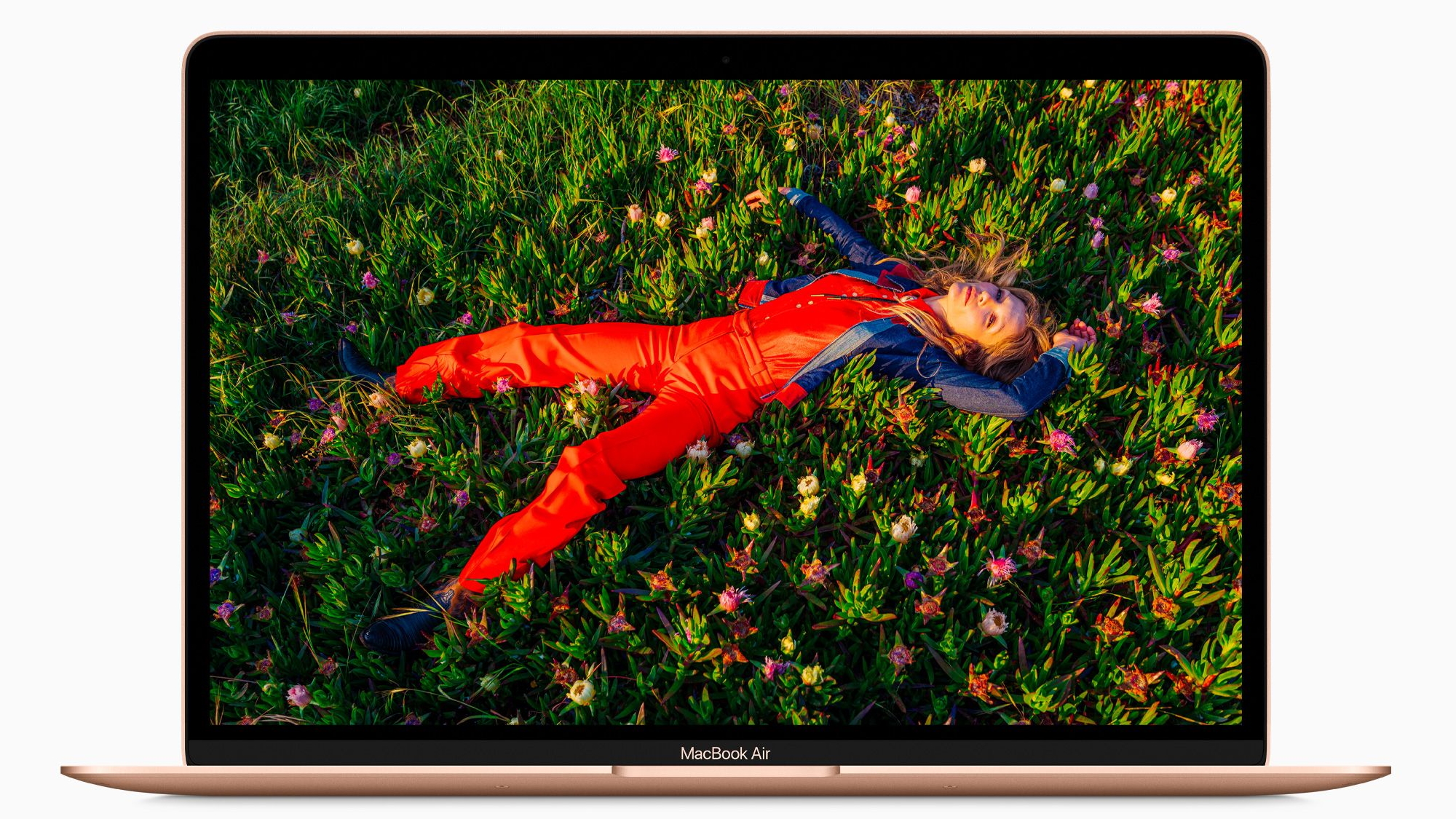
A more affordable MacBook for video editing
Specifications
CPU: Apple M1
Graphics: Integrated 7-core /8-core GPU
RAM: 8GB – 16GB
Screen: 13.3-inch (diagonal) 2,560 x 1,600 LED-backlit display with IPS technology
Storage: 256GB – 2TB SSD
Dimensions: 11.97 x 8.36 x 0.63 inches (30.41 x 21.24 x 1.61cm; W x D x H)
Reasons to buy
+Silent to use +Amazing battery life
Reasons to avoid
-Fanless design could impact performance
Apple radically overhauled its most affordable MacBook, the MacBook Air, at the end of 2020, and the upgrades mean it's one of the best MacBooks you can buy for video editing. This is because it now comes with the same ARM-based Apple M1 chip as the more expensive MacBook Pro 13-inch.
So, it's got a tremendous amount of power under its hood and can easily handle editing 4K video in Final Cut Pro without breaking a sweat. Its fanless design also means that it is pretty much completely silent when in use. And, as with previous MacBook Airs, it features a gorgeous thin and light design that makes it easy to carry around with you.
Also, for the first time in a MacBook Air, the latest model supports the P3 colour gamut, which means the screen can display accurate colours, a consideration that's incredibly important for video editors.
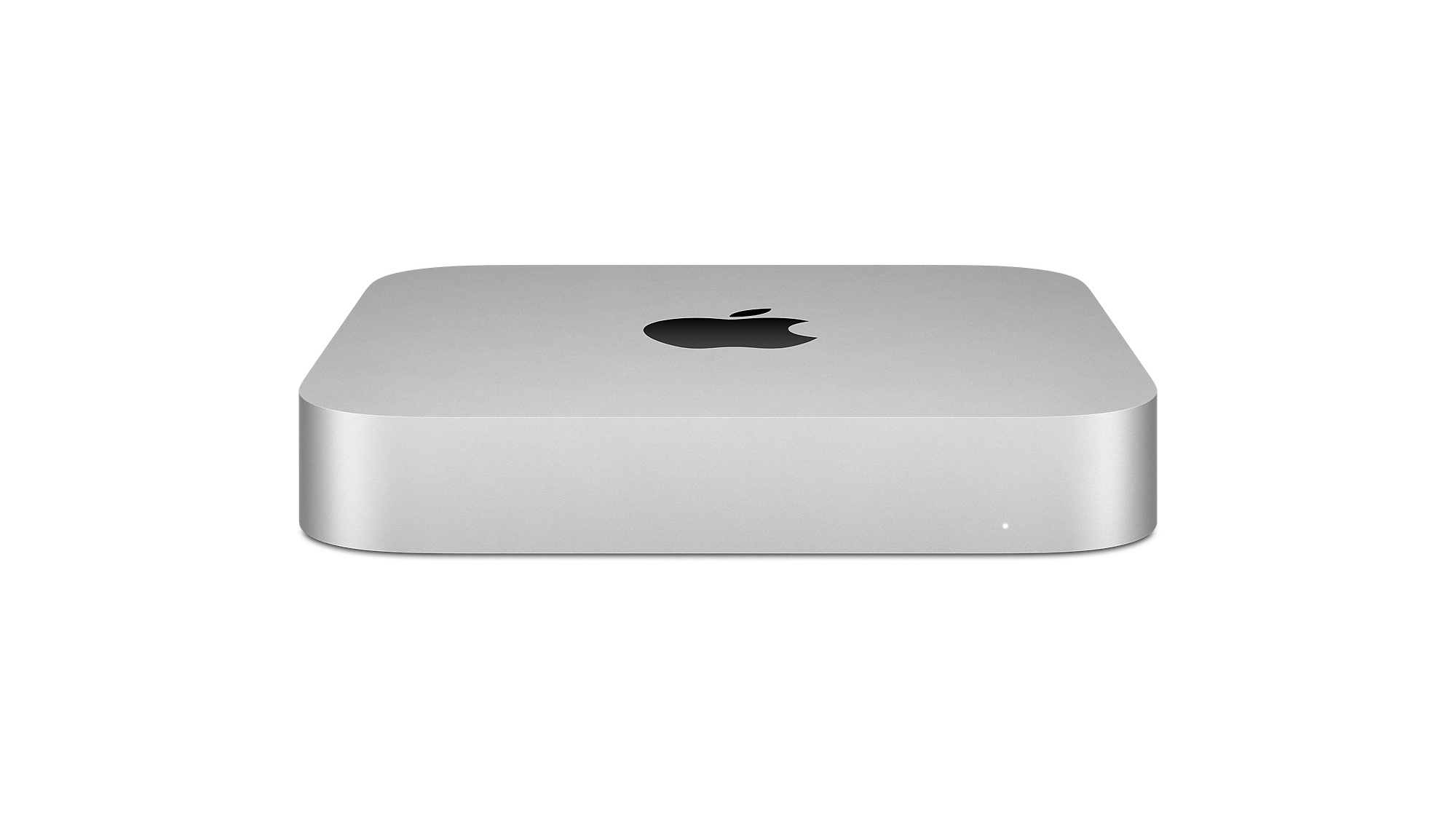
07. Apple Mac mini (M1, 2020)
Powerful, small and great for video editing
Specifications
CPU: Apple M1 chip with 8-core
Graphics: Integrated 8-core
RAM: 8GB – 64GB unified memory
Storage: 256GB – 2TB SSD
Dimensions (W x D x H): 19.7 x 19.7 x 3.6 cm
Reasons to buy
+Very good performance +New M1 hardware has potential
Reasons to avoid
-Can't use eGPUs
The new Mac mini is a brilliant compact Mac for video editing, and has recently been upgraded to include the new Apple M1 chip, which packs an 8-core GPU. This means despite its small size, this is a very capable Mac for video editing - just pair it with one of the best monitors for video editing and you've got a great setup that looks fantastic on any desk.
The base model features the Apple M1 chip with 8-core CPU and 16-core Neural Engine, and there are four expansion ports at the back for either USB or Thunderbolt external storage, plus HDMI 2.0 to simultaneously support two displays. However, unlike older Mac minis, you can't add an external GPU, which is a shame, as that was a good way to boost the video editing chops of this tiny Mac.
It's also the same hardware found in the new iMac 24-inch model, and offers very similar performance, but without the built-in display, and for quite a bit less money. If you already have a monitor you love using, then the Mac mini is a great alternative to the new iMac, and can save you a decent amount of cash.

08. iMac (27-inch, 2020)
A larger iMac for video editing
Specifications
CPU: 10th-generation Intel Core i5 – i9
Graphics: AMD Radeon Pro 5300 - Radeon Pro 5700 XT
RAM: 8GB – 128GB 2666MHz DDR4
Screen: 27-inch (diagonal) 5120 x 2880 Retina 5K display
Storage: 256GB – 8TB SSD
Reasons to buy
+Improved internals +Can be configured to be very powerful
Reasons to avoid
-Design is getting old -Just two Thunderbolt ports
If you're after a powerful, and stylish, Mac for video editing, with a large display and solid build quality, than the 27-inch iMac is worth considering. Released in 2020, this model comes with cutting edge components from Intel and AMD, with the latter's powerful graphics card being particularly useful for video editing.
That discrete graphics card is perhaps the biggest reason why you'd buy this slightly older iMac, rather than the smaller and newer iMac that Apple recently released. That one uses Apple's M1 chip, which is an excellent performer, but it means you rely on integrated graphics. For most video editing tasks that's fine, but it can't compete with the discrete GPU inside the 27-inch model.
The webcam and built-in microphone has also been improved, which is handy for many people who now find themselves working from home. Sure, the design of this iMac hasn't changed, which makes it look outdated compared to the new 24-inch iMac, but it's still impressively slim and stylish.
![best computers for video editing: Apple iMac Pro [Image: Apple]](https://cdn.mos.cms.futurecdn.net/2mRAs5W3jwoMqFcmG4eJ34.jpg)
09. Apple iMac Pro
An epic iMac for video editing
Specifications
Display: 27-inch 5K Retina
Processor: 8-, 10- or 18-Core
Turbo Boost: up to 4.5GHz
Memory: 32GB
Storage: 1TB
Graphics: Vega GPU
Size: : (h) 51.6cm x (w) 65.0cm
Weight: 9.7 kg
Connections: 10Gb Ethernet, four Thunderbolt 3 (USB‑C) ports, four USB 3 ports, SDXC card slot
Reasons to buy
+Incredibly powerful +Superior graphics
Reasons to avoid
-Very expensive
If you're after a high-end powerful all-in-one Mac for video editing and other uses, then Apple's iMac Promay be for you, as long as you have the budget. Featuring the same slim and stylish design as Apple's other (more affordable) iMacs, the iMac Pro comes with incredibly powerful hardware.
Starting with an 8-core Intel Xeon processor, the least expensive iMac Pro option is already immensely powerful, with an outrageous 18-core option for those who can afford it. 1TB to 4TB of SSD internal storage means that you'll be able to store tonnes of 4K footage before you need to think about additional best external hard drives. And it's not short on ports, either, with four Thunderbolt 3.0 ports and a 10GB Ethernet port.
The built-in screen is also one of the finest around, with a 27-inch screen size and 5K resolution. It's showing its age, however, and it feels like Apple has lost interest in the iMac Pro, with the 24-inch iMac getting a complete redesign, and the 27-inch iMac getting a performance boost that puts it closer to this beast, but for a lot less cash. Meanwhile, there's been no hint of a new iMac Pro for a while now.
Related articles:
- Best laptops for graphic design
- MacBook Pro vs MacBook Air
- Apple iMac M1 review

Matt has been a technology journalist for well over a decade, writing for publications such as T3, MacFormat and Creative Bloq. He's a senior editor of TechRadar, Creative Bloq's sister site, where he can be found writing about and reviewing laptops, computers, monitors and more. He often writes for Creative Bloq, helping creatives find their perfect laptop or PC.
Related articles
Why Is Video Editing Better on a Mac
Source: https://www.creativebloq.com/buying-guides/best-macbook-for-video-editing